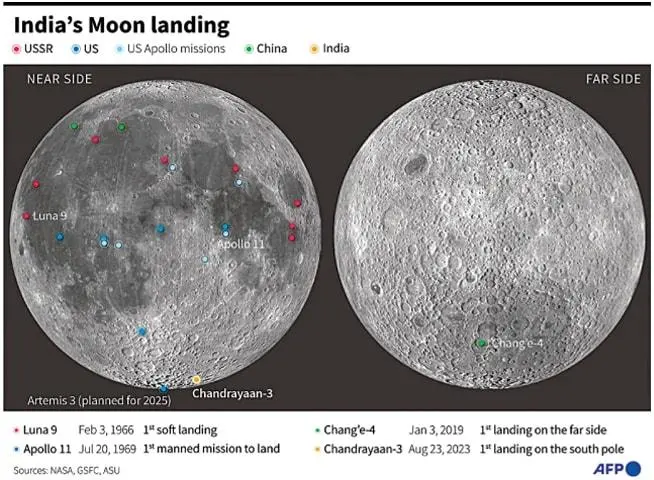Lunar Volcanoes Shaped Both Sides of the Moon
Why in the news?
China’s Chang’e-6 mission brought back lunar soil samples, revealing volcanic activity on the moon’s far side billions of years ago, providing crucial insights into its geological history.
Key Findings from Research:
- Researchers analysed lunar soil brought back by China’s Chang’e-6 spacecraft, the first to collect samples from the moon’s far side.
- Volcanic rock fragments dated to8 billion years ago, with one sample as ancient as 4.2 billion years.
- The study confirms active volcanoes existed on both the near and far sides of the moon billions of years ago.
Significance of the Study:
- This is the first direct evidence of volcanic activity on the far side, an area previously unexplored.
- Findings align with earlier suspicions based on NASA’s Lunar Reconnaissance Orbiter data, revealing an active volcanic past for the moon’s hidden side.
- Published in Nature and Science, the research sheds light on the moon’s geological history over a billion years.
Future Exploration:
- Researchers aim to understand why the moon’s far side, marked by craters and lacking dark lava plains, differs from the near side.
- Findings contribute to unravelling how volcanic activity persisted for such a long duration on the lunar far side.
- These insights enhance knowledge of lunar evolution and guide future lunar missions.
About the Moon’s Near, Far, and ‘Dark’ Sides:
- Near Side: The 60% of the Moon visible from Earth, always facing Earth due to tidal locking. All human lunar missions have occurred here.
- Far Side: The Moon’s hidden side, less explored due to tidal locking. It receives equal sunlight as the near side.
- ‘Dark’ Side Misconception: Refers to the unknown, not absence of light.
- Historical Exploration: Soviet Luna 3 (1959) first photographed it; Apollo 8 astronauts (1968) first saw it.
- Milestone Landing: China’s Chang’e 4 landed on the far side in 2019.
Sources Referred:
PIB, The Hindu, Indian Express, Hindustan Times




